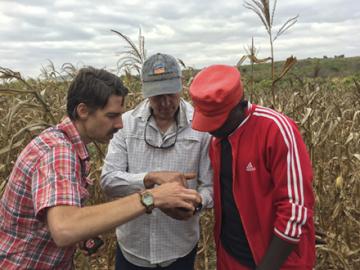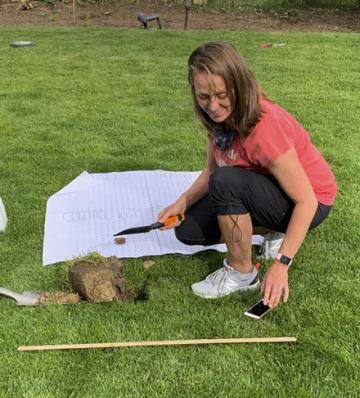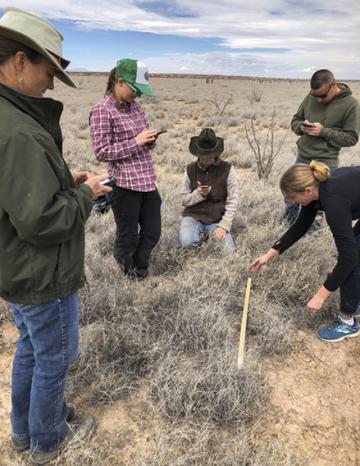Want To Know What’s In Your Soil? There’s An App For That!

In Tanzania, University of Colorado professor Jason Neff (center) and Colorado State University professor Jonathan Salerno (left) demonstrate LandPKS mobile app functions for a Tanzanian agricultural extension agent. (Jeff Herrick, D4428-1)
It’s hard to remember life before “apps,” isn’t it? We use them every day to check bank balances, stock prices, weather forecasts, and so much more. Several years ago, a group of Agricultural Research Service (ARS) scientists saw great potential for apps in agriculture. Their foresight led them to develop “LandPKS,” an app that allows users anywhere in the world to access, collect, store, interpret and, if they wish, share soil, vegetation cover, and management data via a smart phone or tablet.
The goal of LandPKS is to provide global access to knowledge for sustainable land management, according to Jeff Herrick, a soil scientist in the ARS Range Management Research Unit in Las Cruces, NM. “LandPKS identifies and delivers knowledge relevant to specific soils, and it can be used for a variety of management systems and objectives,” said Herrick, who conceived and leads the project.

The LandPKS mobile app can also be used to identify soil and monitor vegetation in suburban yards. (Kristi Meyer, D4426-2)
Short for Land-Potential Knowledge System, LandPKS has four input modules that can be used individually or together to customize the app to the user's needs:
-
LandInfo
-
LandManagement
-
LandCover
-
SoilHealth
Using GPS for pinpoint location, LandPKS allows access to vast amounts of existing, open-source data on soil, ecology, climate, and more. Much of the U.S. data is from ARS and USDA's Natural Resources Conservation Service (NRCS), and each time users input data on their own soils, the app's soil identification accuracy improves. Herrick pointed out that users have the option to keep their information private if desired.
So, what can it do?
-
help users discover the value and potential of their land based on its characteristics
-
allow access to soil information from anywhere
-
accurately identify soil type
-
help users track planting and harvest dates and management efforts

Researchers evaluate the LandPKS mobile app for vegetation monitoring at the USDA-ARS Jornada Experimental Range. (Shawn Salley, D4424-1)
LandPKS is not just for farmers and ranchers; anyone can use it. It's a handy tool for gardeners, who can use it to help determine the soil type of their garden. Teachers are also using a curriculum unit based on the app that aligns with Next Generation Science Standards used by many states by promoting an understanding of how soils and topography determine the land's potential to support crop production.
With enhancements made and testing completed, a complete version of the app was released in January 2020. It is available for free download at the Google Play Store and the iTunes App Store (by searching "LandPKS").
Major funding support for LandPKS development was provided through a cooperative agreement with the United States Agency for International Development, with more recent support from the Bureau of Land Management and NRCS, and collaboration with the University of Colorado, New Mexico State University, and many other organizations worldwide. —By Sue Kendall, ARS Office of Communications.

